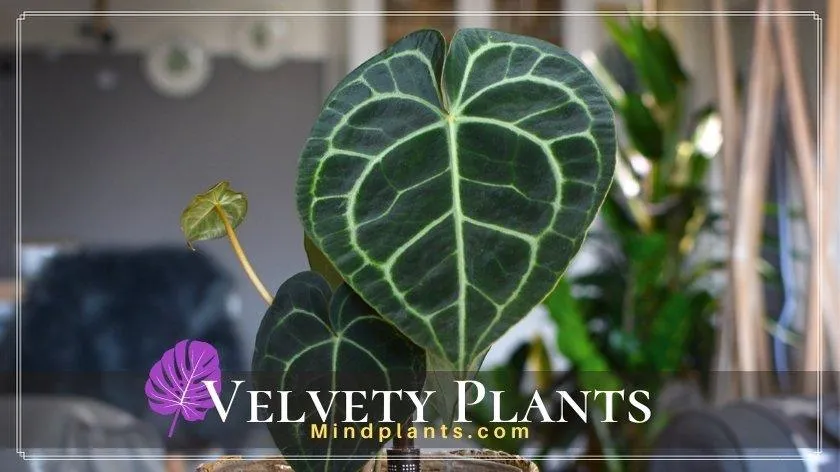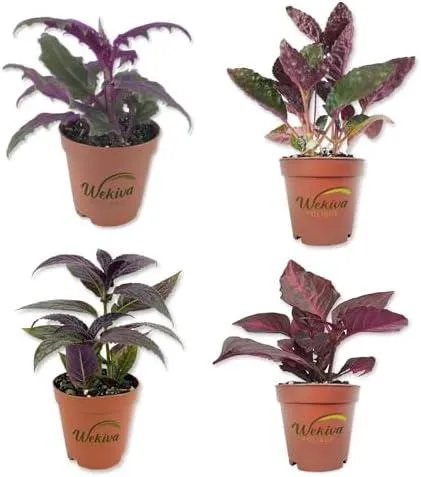Velvet Leaf Plants: A Complete Guide to These Unique and Gorgeous Houseplants
If you’re searching for plants with soft, velvety leaves, you’ve come to the right place. Velvet leaf plants have textured foliage that feels luxurious to the touch. Their leaves are often fuzzy, downy, or coated in fine hairs that give them a plush appearance. From my experience gardening, these plants make unique and eye-catching additions to both indoor and outdoor spaces.
Why Are Velvet Leaf Plants So Appealing?
Several factors contribute to the appeal of velvet leaf plants. First, their fuzzy or downy leaves have an alluring visual texture that stands out compared to typical smooth-leaved plants. The velvet surface catches the light in a way that accentuates the leaves’ natural colors and patterns. At the same time, the foliage feels interesting and sensual to gently run your fingers over. I often catch myself unable to resist lightly rubbing velvet leaves as I tend my garden!
In addition to visual and tactile appeal, velvet leaf plants adapt well to growing indoors as low-maintenance houseplants. Many varieties thrive in average home conditions without high-intensity lighting or specialized care. This makes them a low-effort way to add luxe decor elements to any space. Whether placed on a living room side table or apartment kitchen windowsill, velvet leaf plants instantly elevate the look and feel of a room. Their unique quality stands out amidst more basic foliage.
Common Types of Velvet Leaf Plants
Now that you understand the allure of these plants, here are some top velvet leaf varieties to consider:
- Peperomia – With over 1000 species, peperomias offer a huge range of velvet leaf shapes and colors. Popular varieties include Ruby Cascade peperomia with ruby red leaves and Rosso peperomia with deep burgundy foliage.
- Coleus – Available in every color imaginable, coleus sport dramatically patterned and textured leaves. Patterns range from sparkling pink and purple blotches to intricate marbled designs.
- Polka dot plant – True to its name, this plant’s leaves emerge bright green with darker green spots. The spots expand into large imperfect circles as leaves mature.
- Crossandra – Often called firecracker plant, crossandra leaves emerge soft rose-pink and age to a burnished mahogany color.
- Velvet plant – As the namesake, Gynura aurantiaca has fuzzy purple leaves edged in cream that resemble plush velvet.
Those are some of the most commonly available velvet leaf plants. However, many other varieties from other plant families like begonias, calatheas, and philodendrons also have lusciously soft foliage worthy of consideration.

Care Tips for Velvet Leaf Houseplants
While velvet leaf plants generally adapt well to indoor conditions, there are a few tips that will help them thrive:
- Locate plants in bright, indirect light to show off leaf textures and colors. East or west-facing windows provide perfect illumination.
- Maintain consistent moisture by watering when the topsoil becomes dry. Some varieties like crossandra need higher humidity, so situate them near a pebble tray to catch moisture from your kitchen or bathroom.
- Feed monthly during growing season with liquid houseplant fertilizer diluted to the label’s directions.
- Repot in fresh potting mix every 1-2 years or when roots begin circling the drainage holes. Aim for a container just 1-2 inches wider than the root ball.
- Cut stems back by one third if plants become leggy or lose lower leaves over time to encourage bushier regrowth.
- Wipe down leaves occasionally with a soft, damp cloth to remove accumulated dust and reveal beautiful leaf textures.
Creating Arrangements with Velvet Leaf Plants
Grouping various velvet leaf plants together makes an eye-catching indoor display. Here are some ideas:
- Combine peperomias like Ruby Cascade with coleus or crossandra for a mix of jewel-tone foliage colors and textures.
- Add polka dot plant to a collection including velvet plant and begonia to play up different leaf spotting and fuzziness patterns.
- Use trailing vines like philodendron or pothos as a backdrop and tuck small peperomia, calathea, and prayer plant varieties into the foreground for layered visual interest.
- Create a monochromatic arrangement by gathering assorted shades of one color family, like all red, pink, or purple velvet leaf varieties.
- Display a single statement plant, such as a full coleus plant, as a centerpiece surrounded by colorful succulents or air plants for low-maintenance companionship.
Reconfigure plants every month or two by gently rotating pots to different locations and heights within your arrangement. This keeps displays looking fresh. Feel free to experiment with unconventional containers too – velvet leaf plants adapt well to rustic terra cota pots, woven baskets, or enamelware.
Caring for Velvet Leaf Plants Outdoors
While many velvet leaf varieties thrive as houseplants, some species can also spend the warm seasons outside:
- Coleus and crossandra are annuals that bloom vividly when grown outdoors in partial shade with consistent moisture.
- Polka dot plant and calatheas transition well to patio containers once nighttime temperatures remain above 50°F.
- Certain begonias, like angel wing begonia, take full sun or partial shade and produce ruffled blooms all summer long.
- Velvet plant assumes a bushier habit outside and may rebloom if brought indoors before frost for winter dormancy.
Acclimate plants slowly to outdoor conditions by beginning with short daily stints in dappled light. Move pots to progressively sunnier spots over a few weeks. Bring plants indoors before first fall frost to overwinter as beautiful houseplants once more.

Frequently Asked Questions
Here are answers to some other common questions people have when exploring velvet leaf plants:
Are velvet leaf plants toxic to pets?
Most varieties pose no risk, but a small number like velvet plant, philodendron, and pothos can cause mild gastric upset if ingested. To be safe, keep plants out of reach of curious cats and dogs.
How do I prevent pests on velvet leaf plants?
Regularly inspecting for signs of pests and implementing preventative measures goes a long way. Wipe down leaves weekly, quarantine new buys, and treat with neem oil every few weeks as a natural pest deterrent. Look out for spider mites, scale, and mealybugs especially.
What if my velvet leaf plant isn’t thriving?
Common issues include insufficient light, inconsistent watering, and poor drainage. Check conditions are suitable, move the plant to a brighter spot, improve soil quality if soggy, and trim any mushy or yellowed foliage to promote new growth.
Are all velvet leaf plants suitable for low-light interiors?
Some varieties like calathea and stromanthe may struggle without very bright light near an east or west window. Stick with more adaptable options like peperomias, coleus, or polka dot plant if interior light is moderate.

I hope this guide has helped uncover your interest in velvet leaf plants and answered any other intentions you had in researching them. From coleus to velvet plant, their distinctive foliage adds lush decorator pieces to any home or garden. Enjoy exploring these beguiling plants further and let me know if any other questions arise!
Common Velvet Leafed Plants
| Plant | Light Requirements | Care Level | Size | Uses |
|---|---|---|---|---|
| Peperomia | Bright indirect light | Low | 6-24 inches tall | Houseplant, foliage |
| Coleus | Bright light | Low | 12-24 inches tall | Outdoor plant, foliage |
| Philodendron | Low to medium light | Low | 2-6 feet tall and wide | Houseplant, foliage |
| Pothos | Low to bright indirect light | Very low | Up to 6 feet long vines | Houseplant, foliage |
| Velvet Plant | Bright light | Low | 1-3 feet tall and wide | Houseplant, foliage |
FAQ
-
What sorts of leaves do velvet plants have?
Velvet leafed plants have soft, fuzzy leaves that really feel amazing. Their leaves are covered with short hairs that make them feel smooth and silky.
-
Are velvet leaves good or bad?
While velvet leaves may look super cool, they can basically cause issues. See, the hairs that make them fuzzy also make the leaves very drought-tolerant. However, this means they can kind of outcompete other nearby plants for water. At the same time, the soft leaves feels outstanding to touch!
-
Why are some leaves velvety?
It appears that velvet leaves evolved to help protect plants from loss of water. The tiny hairs all over the surface of the leaf trap a thin layer of humid air next to the leaf. This reduces evaporation and keeps the plant from drying out – pretty amazing! Some velvet plants may come from hot, arid regions.
-
What types of plants have velvet leaves?
A number of plant types around the world have adapted velvety leaves. Peppers, tomatoes and beans are common garden veggies with fuzzy foliage. Geraniums, coleus and African violets also sport soft leaves. Some trees like cottonwood even develop fuzzy new growth. You may have noticed the velvet texture if you’ve felt a seedling.

-
Do velvet leaves feel as soft as they look?
The leaves really do feel every bit as velvety soft as they glimpse. Running your fingers over a patch of fuzz almost gives me goosebumps – it’s stunning! Don’t take my word for it though. Maybe give some a gentle pet yourself and discover how smooth and silky they can sense. You’ll wanna rub them all day!
-
What benefits might the unique texture provide?
Besides helping minimize water loss through transpiration, as mentioned, the fuzzy coating could provide other advantages. Perhaps the soft hairs deter herbivores by making the leaves unappealing to munch. Or they may deflect sunlight to keep the delicate leaf interior a bit more cooler. Who knows, they might even assist pollinators with a landing pad – hmm, makes you wonder!
So in summary, while a bit of a nuisance weedy-wise, those velvety plant leaves sure look amazing. Their texture seems perfectly suited for the conditions. But is it worth risking them outcompeting the marigolds? You decide! Let me know if any other questions pop into your head about these interesting plants.
